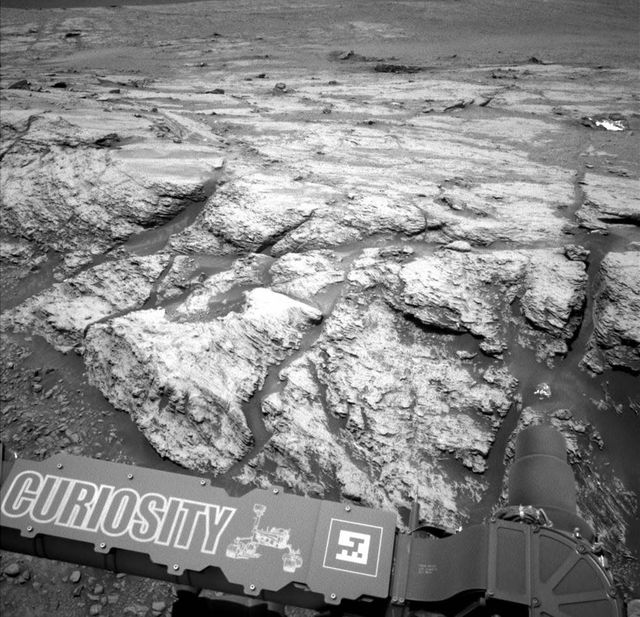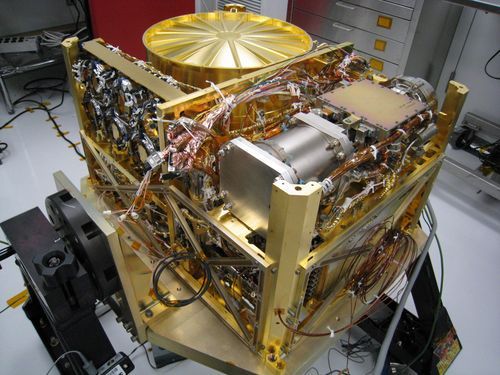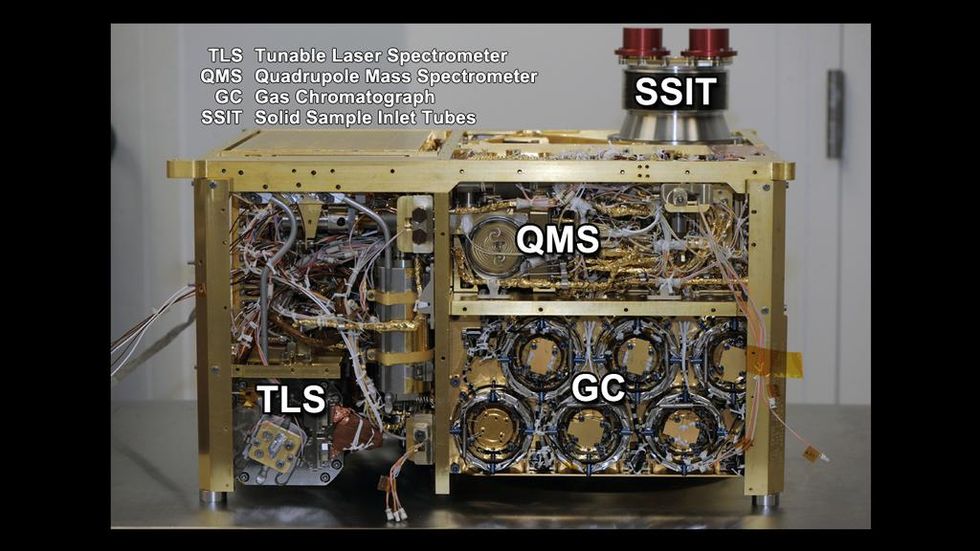NASA's Martian rover Curiosity has discovered that the Red Planet has been producing significantly more methane than previously known. The finding has significant implications for the study of Mars, most notably the possibility that the planet is currently harboring life.
“Given this surprising result, we’ve reorganized the weekend to run a follow-up experiment,” Ashwin R. Vasavada, the project scientist for the mission, wrote to the science team in an email obtained by The New York Times, which reported the finding on June 22.
"With our current measurements, we have no way of telling if the methane source is biology or geology, or even ancient or modern," said Sample Analysis at Mars (SAM) Principal Investigator Paul Mahaffy of NASA's Goddard Spaceflight Center in Greenbelt, Maryland, on June 23rd, in a press statement.
Understanding how much methane Curiosity found requires a measurement known as parts per billion units by volume, or ppbv. One ppbv means that if someone were to capture the volume of air on Mars, one billionth of the volume of air would be methane. Curiosity found 21 ppbv, far more than expected.
NASA is preaching caution at the moment. "The Curiosity team has detected methane many times over the course of the mission," the agency's press statement says. "Previous papers have documented how background levels of the gas seem to rise and fall seasonally."
None of them, the implication goes, has shown any sign of life. NASA told the Times that it considers Curiosity's findings an “early science result.”
But it's hard not to be excited by the idea of methane, which is a potential biosignature of life. On Earth, naturally produced methane is often associated with lakes, swamps, natural gas reservoirs, and the digestive tracts of cows—all breeding grounds for life, even the tiniest microbial entities. Livestock are some of the greatest generators of methane, which might actually be a problem for Earth due to its nature as a greenhouse gas. Studies have theorized about how the gas could have played a role in the origins of life on this planet.
As the Times notes, methane in Martian air would be extraordinary because "sunlight and chemical reactions would break up the molecules within a few centuries. Thus any methane detected now must have been released recently."
The tool that found the methane is known as a SAM. The instrument takes up "more than half the science payload on board the Mars Science Laboratory rover," according to NASA, and features a suite of instruments including a mass spectrometer, a gas chromatograph, and a tunable laser spectrometer.
The laser spectrometer is built to analyze beams of light and look for an abundance of various isotopes of carbon, hydrogen, and oxygen in atmospheric gases such as water vapor, carbon dioxide, and, yes, methane. The spectrometer's measurements are accurate to within 10 parts per thousand.
The SAM team will spend future studies looking at what could be a transient plume. Even if the team doesn't find methane, it will be able to add context to the European Space Agency's Trace Gas Orbiter, which has been orbiting the Red Planet since 2016. Its first results were released in April this year and showed "a surprising lack of methane."
So whatever is happening on Mars with methane, it's not happening consistently. More methane at this point leads to more questions. When the Mars 2020 rover lands on the surface next year, it will certainly have its hands full.
Source: New York Times
David Grossman is a staff writer for PopularMechanics.com. He's previously written for The Verge, Rolling Stone, The New Republic and several other publications. He's based out of Brooklyn.
















